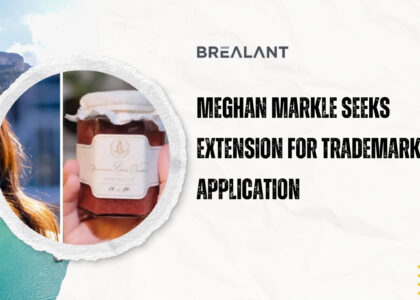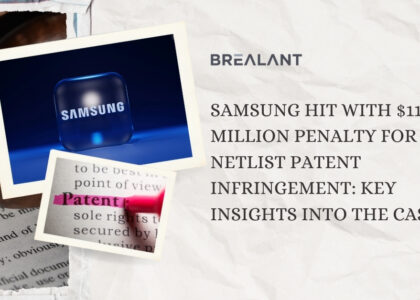What is a Prior Art Search
Prior art is one of the most often cited defences used by the USPTO to reject claims in patent applications. It is possible to use prior art to demonstrate that your idea is not “novel” or “non-obvious,” which are two of the key criteria for determining whether your invention is patentable.
Because of this, it’s critical to comprehend what constitutes relevant Prior Art and how it may impact your patent application.
What is a Prior Art Search?
Technically speaking, what is considered prior art under U.S. law is defined by federal statute 35 U.S.C. 102, which America most recently amended Invents Act (A.I.A.) — changes to the definition of prior art took effect in March 2013.
Simply put, a prior art search looks through various publicly accessible sources to see whether an invention has already been mentioned or described in other references (i.e., prior art). A subsequently filed patent application will not be awarded as anticipated by the prior art if an invention has been disclosed in a prior art reference. In other words, the invention is not novel. It is not eligible for patent protection if a publication was published before the patent application was filed. That publication fully describes all aspects of the invention as claimed.
Patents already issued and published patent applications are the most transparent examples of the prior art. However, a product already on the market for which a patent application still needs to be submitted is still considered prior art. The idea continues, though. Even centuries-old technology can be considered prior art. Prior art can include a previously described concept that was technologically unfeasible at the time. Prior art can be anything. Patents, published patent applications, journals, books, and products are a few examples of sources for Prior Art. However, the most common prior art used by Examiners at the United States Patent and Trademark Office (USPTO), by far, are previously granted patents and patent publications.
What counts as Prior Art?
A common misconception is that prior art is only comprised of published patents or already-existing products. In other words, they mistakenly think that they automatically qualify for a patent just because an innovation has yet to be patented or used in a product.
However, the scope of data that qualifies as prior art goes much beyond commercial goods and issued patents. In general, prior art appears when someone either makes a concept publicly available or submits a patent application that is ultimately published or granted as a patent.
The following are some good examples of prior art:
- A product that was available for sale.
- Commercial use of the invention.
- Articles, publications, or journals (printed or electronic).
- Presentation at a public event (a trade show, conference, etc.)
- Public knowledge or use of the invention (e.g., demonstration)
- A previously-filed patent application (assuming the previous application eventually becomes a published application or an issued patent)
What the first five examples have in common: They were disclosed to the public or made openly accessible. No matter how widely accessible the content is online, characteristics like target audience, language, quantity printed, and location is unimportant for publishing. To give an odd illustration, a high school textbook that was only printed in Kazakhstan might nevertheless be considered Prior Art.
Additionally, before the effective filing date of your patent application, the information had to be publicly disclosed or accessible. A magazine article published on August 31, 2017, and a patent expired in 1950, count as prior art if your effective filing date is September 1, 2017. A demonstration of your product in October 2017 won’t count as prior art, provided you filed on September 1.
However, Example 6 above differs differently from the other instances since a previously filed patent application might not be publicly published or accessible at the time your patent application is submitted. Normally, it takes months or even years for patent applications to be public (such as published applications or issued patents).
But even if a patent application that has already been filed becomes available after your application has been submitted, it may still count as prior art. Therefore, even if a patent application was filed on August 31, 2017, and your effective filing date is September 1, 2017, that application still counts as prior art.
What doesn’t count as Prior Art?
In general, the prior art does not include information that is publicly revealed or made accessible to the public after the filing date of your application. Similar to how later patent applications typically do not count as prior art.
Here are four more considerable deviations from the previous examples.
- Publications that don’t provide enabling detail
A publication must disclose the invention in sufficient detail or provide an “enabling disclosure” for it to be utilized to reject your claims for lacking novelty. To put it another way, a Section 102 rejection cannot be made because the invention cannot be made and used by a person of ordinary competence in the relevant technology from the prior disclosure.
Consider that you develop the Iron Man suit and wish to patent it. Comic books and movies can’t be used to demonstrate the lack of uniqueness in your claims since, while they describe what the suit accomplishes, they need to give more details for the average skilled person to make the outfit.
Remember that non-enabling prior art can be used to show that your invention is obvious.
- Abandoned, secret patent applications
Abandoned patent applications may occasionally remain secret, which disqualifies them from being considered prior art. For starters, non-provisional applications for patents initially filed as provisional applications have yet to be published.
Non-provisional applications are, by default, published 18 months after submission. However, if the applicant withdraws their application more than four weeks before it is scheduled for publication, it will not be published.
The applicant may also seek non-publication if the application was only submitted in the United States; in this instance, the application will be made public after a patent has been issued.
- Trade secrets
Trade secrets can’t be used as evidence of prior art because they are, by definition, confidential. Therefore, even if another firm independently produced an identical invention before you, the other company’s trade secret innovation normally couldn’t be used as prior art against your patent application.
- Confidential disclosures
Even though it could be a better idea, technology companies frequently must disclose their work to third parties before filing a patent application. This is done for various reasons, including determining market interest, looking for funding opportunities, and forming partnerships with other organizations.
When the material is disclosed to third parties obligated to keep it confidential, your patent application is not invalidated by the disclosure as Prior Art. Having everyone sign a non-disclosure agreement is the greatest way to guarantee that disclosure will be treated as confidential (N.D.A.).
What happens if I discover prior art?
For any invention, prior art will always exist. “Only God works from nothing,” a renowned federal judge is said to have said. Man must work with antiquated materials. The existence of prior art is not a requirement for patentability. Instead, the degree to which your innovation departs from the prior art determines whether it is patentable.
The two requirements for patentability over Prior Art are as follows. First, the invention must be original (or “novel” in the statute’s terminology), which typically implies it cannot be a direct copy of any existing item or reference. Simply put, this bans you from patenting concepts already known to the public or the subject of earlier patent applications.
At the next level, though, your innovation must be creative (or “non-obvious,” in the statute’s language), which means it must be more than a minor modification of existing knowledge. This means that an invention is often not patentable if it could be easily made from the prior art by someone with ordinary skill in the relevant field of technology by making clear modifications or replacements.
Additionally, if you are aware of any Prior Art relevant to the patentability of the invention described in your patent application, you should inform the patent office. In dealings with the patent office, all inventors (and anyone else materially connected to a patent application) have an obligation of disclosure, honesty, and good faith. Because the patent office offers a specific technique for informing them about any pertinent Prior Art, complying with this responsibility is frequently simple.
How can I avoid unexpected prior art?
It can often be rather technical to determine if something qualifies as prior art and whether your invention can be patented. Consider hiring a patent lawyer with experience in your business if you want to proceed with a patent application. A knowledgeable lawyer can inform you of your alternatives for handling known prior art in your particular situation.
Conclusion
When considering both the technical aspects of the invention and the legal components of patentability, such as novelty and non-obviousness, it may be wise for inventors to perform a prior art search. In addition to being a technical treatise, a patent or patent application is also a legal document. Thus, even while technical expertise is required for a prior art search, one will get the best results if they are knowledgeable with I.P. law, particularly about the validity and infringement of patents.








